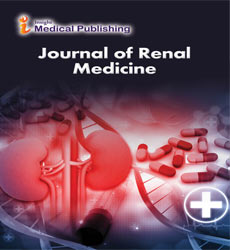Renal function in stone obstructed kidneys
Abstract
Background: Meta-analysis of sham-controlled trials testing renal denervation (RD) found significant between study heterogeneity for most outcome measures. Understanding factors associated with treatment response variation to RD is essential for identifying individuals most likely to benefit.
Methods: Eight sham-controlled trials testing RD were included in this trial-level analysis. We assessed whether the average age and baseline number of blood pressure (BP) medications that participants were on was associated with the effect of RD compared to sham control. The primary endpoint was change in 24-hour ambulatory BP using standardized mean difference (SMD) between sham control and RD.
Results: There were 1,357 participants included in this analysis. The mean [standard deviation (SD)] age was 56 (±10) years and the mean (SD) 24-hour SBP was 154 mmHg (±12) and DBP was 90 mmHg (±11). Participants were on an average of 3 BP lowering medications at baseline. There were robust linear associations found between change in BP and both moderator variables (Figure 1). Both a higher number of BP medications at baseline and higher age were associated with less change in BP between the sham control and RD arms.
Conclusion: Patients who are on more BP medications and who are older may derive less benefit from RD. These may represent phenotypes of patients unlikely to derive significant clinical benefits from RD. Further investigation into the mechanisms behind these associations is warranted
Open Access Journals
- Aquaculture & Veterinary Science
- Chemistry & Chemical Sciences
- Clinical Sciences
- Engineering
- General Science
- Genetics & Molecular Biology
- Health Care & Nursing
- Immunology & Microbiology
- Materials Science
- Mathematics & Physics
- Medical Sciences
- Neurology & Psychiatry
- Oncology & Cancer Science
- Pharmaceutical Sciences
